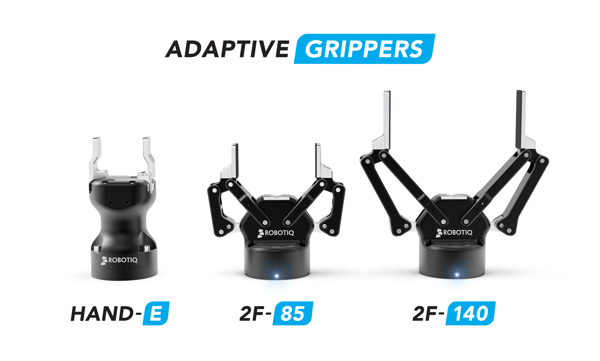How Much Dexterity Does a Robot Need?

What does it mean when a robot is described as "dexterous." And what does it mean for robot users? Here's what to look for when you're selecting a robot based on its dexterity.
The word "dexterity" is thrown around a lot in the robotics world. It's used by robot manufacturers who describe their robots as dexterous. It's used by robotics researchers who describe the dexterity of their developments. It's used by gripper manufacturers who describe their grippers as dexterous.
You might ask: How much dexterity does my robot need to have?
The answer: It's impossible to say. Nobody can seem to decide what makes a robot dexterous.
Robotic dexterity is a complex topic. It's hard to tell how much dexterity you'll need for a particular robotic application — or even if "how much" is the right question to be asking.
Robotic dexterity = a moving goalpost
To understand why this is a tricky topic, it's useful to look at an example.
Last year, a research team from UC Berkeley claimed that they had created the "most dexterous robot ever created".
When I heard the news, I was skeptical. Not because I doubted that they had made a technological breakthrough. I was skeptical of the word "dexterous". I knew from experience that this word is a moving goalpost in the world of robotics.
You see, I investigated robot dexterity as part of my PhD, which I completed back in 2014. During my research, I discovered that there is no standard definition for "dexterity" in the robotics community. As a result, researchers often claim that their robot is "dexterous" without defining what this means.
This makes it very difficult for robot users.
If we don't know how dexterous a robot is, how can we tell if it's the right one for our task?
I was right to be skeptical. The UC Berkley team had done what many researchers have done in the past. They had invented an entirely new metric to measure dexterity. Their metric ignored the physical properties of the robot and instead focused on machine learning performance. There's nothing inherently wrong with their new metric — which is really a measure of bin picking speed — but it certainly can't be used to prove that the researcher's robot is "the most dexterous robot ever created." In order to say that, you'd need to measure all dexterous robots using the same metric.
This is not an isolated case. I've seen the same thing happen again and again. People use their own definition to try to prove a robotic system is dexterous.
There is no standard metric for dexterity — not until ISO nails it down at least. Unfortunately, that means you have to find your own way to assess a robot's suitability for your task.
How to discover the dexterity needs of your task
The solution is to ignore the claims of "dexterity" made by manufacturers, the media, or researchers.
Instead, you should look closely at your robotic task and assess the specific performance that is vital for each of the steps. You can use this information to come up with your own definition of dexterity for your specific application.
Here are some of the important factors which relate to robot dexterity, along with questions that you can ask yourself to narrow down the needs for your task:
- Object size — How small are the objects that the robot will manipulate? Are there a variety of sizes or are all objects identical? How does this compare with the reach required of the robot?
- Object shape — What shape are the objects? Do they have many complex edges or a simple geometrical shape? Are they spherical or otherwise difficult to grasp?
- Gripping strategy — What are the different ways that the objects can be grasped (e.g. with an encompassing grip, internal grip, or suction)? Are there different ways to grasp the same objects? Are the objects delicate and so require a particular gripping strategy?
- Reachability — How much does the robot have to "stretch" to reach all important locations in the workspace? Does it need to use all the robot's workspace, or just a small part of it? Does it need to approach locations from many different angles?
- Speed — What cycle time is required for each action?
We sometimes think that factors 1-3 are only related to the robot's gripper and factors 4-5 relate to the manipulator. However, they are all inter-related. One factor in isolation does not necessarily define the robot as "dexterous" (e.g. a fast robot is not always dexterous), but together they give a picture of the dexterity needs of the task.
- Read more: End Effector Gripping Strategies
I should add that there are probably other factors besides those which I've listed which contribute to a robot's dexterity, but these 5 are a good place to start.
Examples: High-dexterity tasks vs low-dexterity tasks
Let's look how these factors relate to some fictional examples.
Example 1: A high-dexterity assembly task
The task involves picking up several small, tough parts (1-3mm wide) with a variety of complex geometrical shapes. The robot needs to rotate the parts to align them and then assemble them together. Then, the robot must move 1.5m to the other side of its workspace to insert the assembled parts into a box. A cycle time of 30 seconds per part is required.
|
Dexterity factor |
Relationship to this task's dexterity |
|
Object size |
The objects are very small, particularly considering the large reach required to the robot (1.5m). |
|
Object shape |
Objects are a variety of shapes which means that the gripper will need to be adaptable. |
|
Gripping strategy |
The shapes are geometric, so flexible grasping is likely to be needed. The objects are tough so don't need delicate handling. |
|
Reachability |
The manipulation will be focused on two far-apart areas of the workspace. In the assembly area, it may need to be approach the objects from various angles. |
|
Speed |
The required cycle time is very small for such a complex assembly application. |
Most of the factors suggest a high degree of dexterity.
Example 2: A low-dexterity pick and place task
The task involves picking medium-sized, cuboid objects from one part of the workspace and placing them at an inexact location a short distance away. The objects are quite fragile and a cycle time of 30 seconds is required.
|
Dexterity factor |
Relationship to this task's dexterity |
|
Object size |
The objects are not small and do not need to be placed precisely. |
|
Object shape |
The objects are a uniform, basic shape which is easy to grasp. |
|
Gripping strategy |
The objects are a basic shape, but they are fragile so a force-limited or vacuum gripper may be necessary. |
|
Reachability |
Very little of the robot's workspace is required. |
|
Speed |
The cycle time is low for the simple task and short distance required. |
Most of the factors suggest a low degree of dexterity, despite the fact that the objects are fragile.
How to pick the best robot and gripper for you
As you can see, the dexterity required for a task can't be defined by a single factor. Various properties of both the robot and its gripper will combine to determine the system's dexterity.
For more information on selecting robots and end effectors, check out these free eBooks:
- Getting Started With Collaborative Robots
- Collaborative Robots Buyer's Guide
- Grippers for Collaborative Robots








Leave a comment